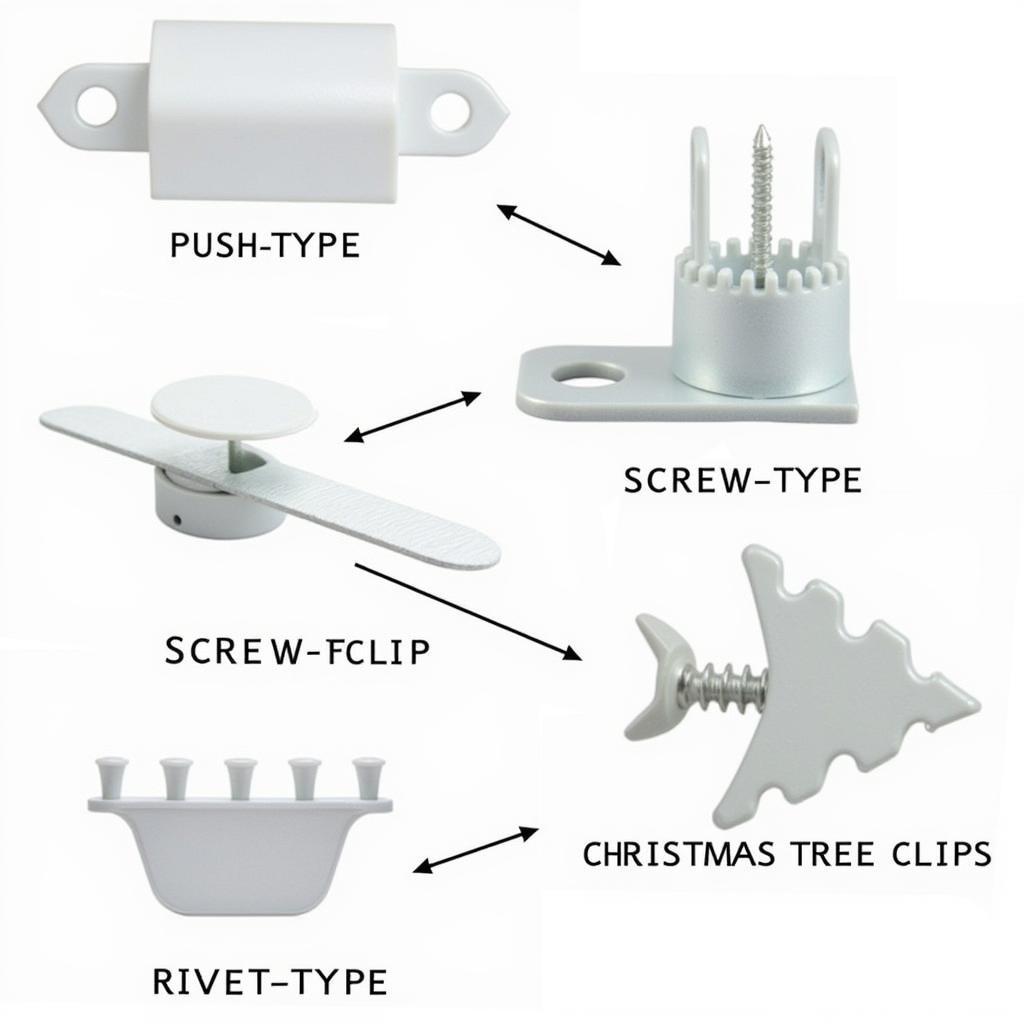Clips are essential for securing your car’s fender liner, a crucial component protecting your engine bay from debris, water, and road grime. A loose or damaged fender liner not only looks unsightly but can also lead to more serious issues like rust and corrosion. This guide will delve into the world of clips used in car fender liner repair, equipping you with the knowledge to tackle this common automotive issue.
Understanding Fender Liner Clips
Fender liner clips, also known as retaining clips or push clips, come in a variety of shapes, sizes, and materials. They’re designed to fasten the fender liner to the car’s body and wheel well. Choosing the correct clip is crucial for a secure and long-lasting repair. Using the wrong type can lead to further damage or the liner becoming detached again. Common materials include plastic, nylon, and metal. Plastic clips are the most common due to their affordability and ease of installation, while metal clips offer greater durability in harsh conditions.
Types of Fender Liner Clips
There are several common types of fender liner clips, each suited for specific applications. Understanding these differences is key to a successful repair.
- Push-Type Clips: These are the most frequently used type, featuring a simple push-in design for quick installation.
- Screw-Type Clips: These offer a more secure hold and are often used in areas subjected to higher stress or vibration.
- Rivet-Type Clips: These provide a permanent fastening solution and are typically used for heavier-duty applications.
- Christmas Tree Clips: These are named for their branched design and are commonly used in plastic panels and trim.
 Types of Fender Liner Clips
Types of Fender Liner Clips
Diagnosing Fender Liner Issues
Before replacing your clips, it’s important to diagnose the problem. A thorough inspection will help you determine the extent of the damage and identify the correct clips needed.
- Visual Inspection: Look for any signs of sagging, tearing, or detachment. Check for missing or broken clips.
- Physical Check: Gently tug on the liner to assess its security. If it moves easily or feels loose, the clips are likely worn or damaged.
Why Choose the Correct Clip?
Using the correct clip is paramount for a successful repair. An ill-fitting clip can lead to the liner detaching again, potentially causing further damage. Furthermore, incorrect clips can damage the fender liner or the car’s body.
 Fender Liner Damage from Incorrect Clip
Fender Liner Damage from Incorrect Clip
Replacing Fender Liner Clips: A Step-by-Step Guide
Replacing fender liner clips is a relatively straightforward process that can often be done at home with basic tools.
- Gather Your Materials: You’ll need the correct replacement clips, a screwdriver or pliers (depending on the clip type), and possibly a trim removal tool.
- Remove the Old Clips: Carefully pry out the old clips using a screwdriver or pliers. Be careful not to damage the surrounding area.
- Clean the Area: Clean the area around the clip holes to ensure a secure fit for the new clips.
- Install the New Clips: Align the new clips with the holes and push them in firmly until they are securely fastened. For screw-type clips, tighten the screws appropriately. Rivet-type clips will require a specific tool for installation.
- Test the Liner: Tug gently on the liner to ensure it’s securely attached.
Tips for a Smooth Repair
- Consult your car’s manual or a parts specialist to ensure you purchase the correct clips.
- Use a trim removal tool to avoid scratching your car’s paint.
- If you’re unsure about any step, consult a professional mechanic.
“Always choose high-quality replacement clips,” advises John Smith, Senior Automotive Engineer at Acme Auto. “Inferior clips can break easily and lead to recurring problems.”
 Installing New Fender Liner Clips
Installing New Fender Liner Clips
Conclusion
Fender liner clips play a vital role in keeping your car’s undercarriage protected. By understanding the different types of clips used in car for fixing fender liner and following the steps outlined in this guide, you can easily tackle this common repair and keep your car in top shape. For personalized support or assistance, connect with us at AutoTipPro at +1 (641) 206-8880 or visit our office at 500 N St Mary’s St, San Antonio, TX 78205, United States.
“Regularly inspecting your fender liner and clips can prevent more significant issues down the road,” adds Maria Garcia, Lead Mechanic at Reliable Rides Auto Repair.
“Remember, a well-maintained fender liner not only enhances your car’s appearance but also protects its vital components,” concludes John Smith.







Leave a Reply